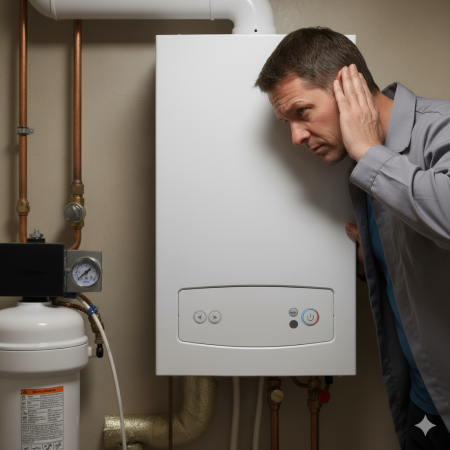Whether you have been watching too much HGTV and want to give your kitchen a full makeover or need extra cash to cover an emergency repair, a home improvement loan can be a great option for financing. That said, there are five main types of home improvement loans to choose from. Consider the ins and outs of each to determine if either one is a good fit.
What is a home improvement loan?
A home improvement loan is a type of personal loan used specifically for financing costs that come with repairs or remodels made to your home.
5 loan types for home improvement projects
There are five primary types of home improvement loans you can consider when beginning your shopping journey. While all leave you with a finished project, some may fit your situation better than others.
Home equity loan
Funded by the equity in your home and received in a lump sum, a home equity loan usually has a fixed interest rate and can be repaid anywhere between five and 30 years. On top of this, lenders will generally allow you to borrow up to 85 percent of your home’s equity for the project.
Borrowers can secure a home equity loan from banks, credit unions or online lenders with competitive rates offered depending on creditworthiness.
One of the main advantages of using a home equity loan is that, since the loan is secured by collateral, you typically get lower interest rates than with other types of financing. On the other hand, using your home as collateral isn’t something you should take lightly. Defaulting on the loan could come with some serious consequences, including foreclosure.
Best for borrowers with a good amount of home equity
This is ideal for those that have more worth in their homes than what is owed on the mortgage.
Home equity line of credit (HELOC)
A HELOC is another way to tap into your home’s equity. It allows borrowers to withdraw funds as the need arises for a set period. Interest rates can be variable or fixed.
Although these can be used for various financing needs, they are an excellent way to afford home remodeling as funds can become available for an ongoing home project. When comparing HELOC options pay close attention to available interest rates, terms and potential fees. Additionally, just like with traditional home equity loans, HELOCs also use your home as collateral, so it’s something to keep in mind when thinking about this type of financing.
Best for borrowers with some equity and an ongoing project
HELOCs boast some of the lowest interest rates available, making them a great option for borrowers with strong credit and a low debt-to-income ratio.
Personal loan
A personal loan can be found from a range of lenders, with terms ranging from two to seven years and fixed APRs between 6.70 percent and 36 percent. One of the key benefits of financing a home improvement project with a personal loan is that these types of loans are typically unsecured, meaning they don’t require collateral. However, you’ll need good-to-excellent credit and a stable source of income to secure the best interest rates.
When it comes to using a personal loan to make improvements on your home it is important to consider the time and cost of your project. Home projects do not always stick to a schedule, and since the payments for personal loans sit on a specific timeline it is important to prepare for the unknown. Additionally, not all lenders allow funds to be used for home improvement, so consider that ahead of applying.
Best for borrowers who want an unsecured loan
You can finance a small or midsize home project with an unsecured personal loan. It’s also great for those who need funding fast, as personal loans tend to offer same or next-day funding.
Cash-out refinancing
To benefit from cash-out refinancing you apply for a new mortgage on your home and then, pending approval, you will get an updated loan which is then used to pay off the old. The cash comes in the form of the “extra” amount found in the equity of your home.
Similar to home equity loans, this funding tends to be available shortly after closing and can be up to 80 percent of the value of your home.
That said, make sure you run the numbers before taking the plunge with a cash-out refinance, as they’re not only collateralized by your home but you will most likely end up with a higher mortgage payment.
Best for a big renovation
If you have a major home upgrade in the future, cash-out refinance can provide you access to a large amount of money that other loan options might not.
FHA 203(k) rehab loan
Supported by the Federal Housing Administration, an FHA 203(k) rehab loan is a financing option that combines both the cost to purchase the home and the cost to remodel or repair it. This single loan essentially does the job of two. Available rates are based on your creditworthiness and income and can be a 15- or 30-year fixed-rate mortgage or an adjustable-rate mortgage (ARM).
Best for those purchasing a fixer-upper
An FHA 203(k) rehab loan can make both the purchase and renovation possible.
How to get the best home improvement rates
Just as you would approach any financing product, consider the following factors when shopping for a loan to be used for home expenses.
- Approval criteria. Each lender holds its own qualifications for a borrower’s credit history, debt-to-income ratio and income. Consider approval requirements before applying with a potential lender.
- Interest rates. When comparing potential rates look at any fees that may be incurred throughout the application or lifetime of the loan, as these will also add to the overall cost of borrowing.
- Loan amounts. Depending on the scope of your project, the size of your loan matters. Do the math ahead of time to ensure you finance enough money to complete your home improvement.
- Repayment terms. The longer your repayment term is, the less expensive your monthly cost will be whereas the shorter your loan is the less interest you will pay. Weigh both options when shopping.
Next steps
A recent Bankrate survey found that 25 percent of Americans have delayed home improvements or renovations due to the current state of the economy. But as long as you approach finding a home improvement loan with care and diligence, you can bring your blueprints to life — with or without perfect credit.
Read the full article here









